Gorging on the Kimberley
 How much of the Kimberley can you see in five days? Explorers Erika and Leif found out on a whirlwind journey to experience the very best of the Gibb River Road.
How much of the Kimberley can you see in five days? Explorers Erika and Leif found out on a whirlwind journey to experience the very best of the Gibb River Road.
Words & images by Erika Henning from @thevagabondlife
In my opinion, you can’t argue with the fact that the Kimberley is one of the most breathtaking destinations in the world. When you finally visit its pristine locations, it’s hard to believe that between one tourist season and the next they battle extreme conditions of heat and humidity, annual flooding and the occasional cyclone!
This year, despite Broome copping two cyclones and a hell-of-a-lot of record-breaking rain, a large majority of the Kimberley remained relatively unscathed and has been open to tourists since the beginning of April. So, along with my partner Leif, I decided to take my first ever trip up the southern Gibb River Road, to check out the sights while they were still gushing with water!
For the journey, we’re travelling in my Toyota LandCruiser Troop Carrier, which is set up with an upright Waeco fridge, rear drawers, storage and a comfy bed. It’s our small home-away-from-home on wheels, and although sleeping in it resembles more of a sauna than a bedroom during the more humid and still nights, for the most part it’s incredibly comfortable and suits our travel style - keeping it simple. If we can save money by not buying unnecessary luxuries, it means we can spend it where we value it more, on life-changing experiences and the travel itself (Okay, we splurged on buying an outrageous number plate but it was totally worth it).
Prior to the trip we consulted our Hema Explorer App and mapped out a couple of campsites and other significant places we wanted to visit. Having worked in Broome and Western Australia during the last tourist season we’d been given a list of recommendations from friends of what we should do and see, but of course everyone was still a little bit unsure of the road conditions after the wet season. We ended up mapping out about four days of travelling and had no set date to return home, leaving time to change our plans as we travelled.
Leaving Broome and heading north you instantly say goodbye to the ocean and hello to agriculture and the naturally occurring Boab trees (Adansonia gregorii). The Pindan Wattles (Acacia eriopoda) that line parts of the road were flowering too, which is a beautiful seasonal indication to the local Aboriginal groups that the mullet in the rivers are fat and provide good fishing.
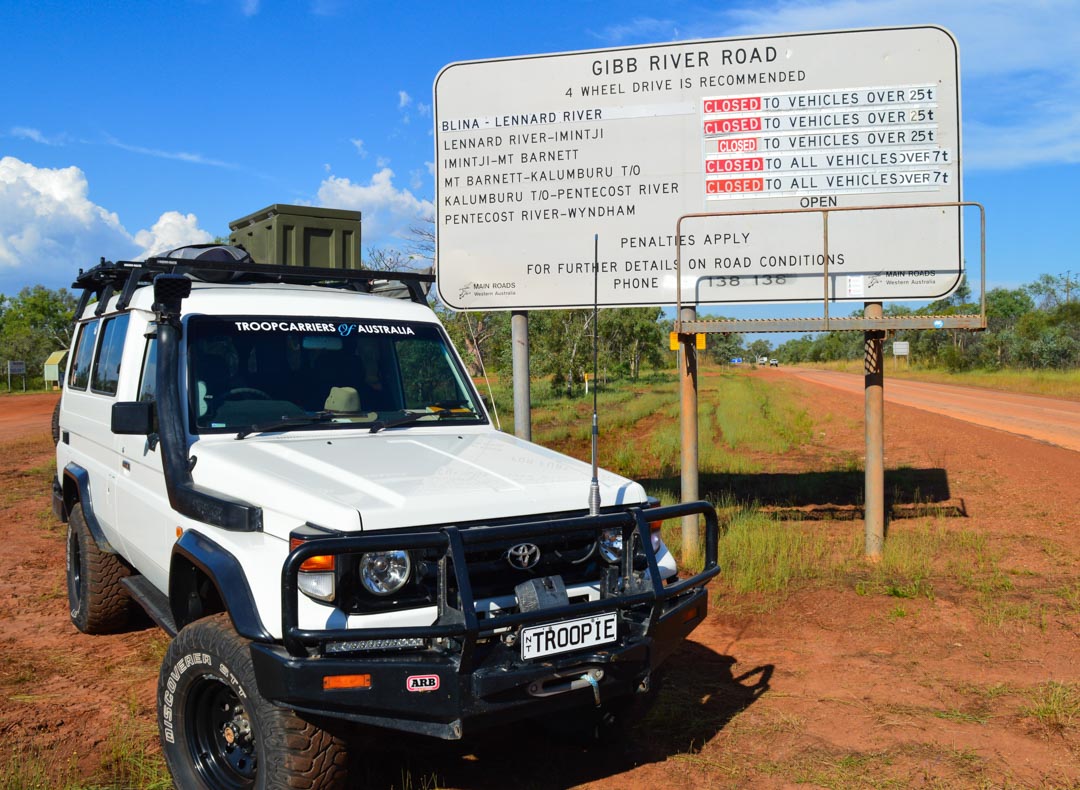 The road leading up to Gibb River Road is easy but the Gibb itself is notoriously dangerous for inexperienced four-wheel-drivers. It can be unpredictable, sandy and corrugated and there’s often cattle or wildlife on the road so you do have to drive with caution and attentiveness. Night driving in these conditions is not recommended, so it helps to plan your days ahead and make sure you’ll be arriving at your campsite before dusk.
The road leading up to Gibb River Road is easy but the Gibb itself is notoriously dangerous for inexperienced four-wheel-drivers. It can be unpredictable, sandy and corrugated and there’s often cattle or wildlife on the road so you do have to drive with caution and attentiveness. Night driving in these conditions is not recommended, so it helps to plan your days ahead and make sure you’ll be arriving at your campsite before dusk.
Our first stop was a free roadside camp called Dog Chain Creek. The free campsites along the Gibb are fantastic, although not as common the deeper into it you get. After the wet season, most of them have freshwater rivers running alongside them with an array of wildlife that you can hear sneaking around during the night. The nights are still relatively warm around this time so there isn’t much need for a fire; it can help to keep those animals you don't want around you (pesky bugs and mosquitos) at bay though.
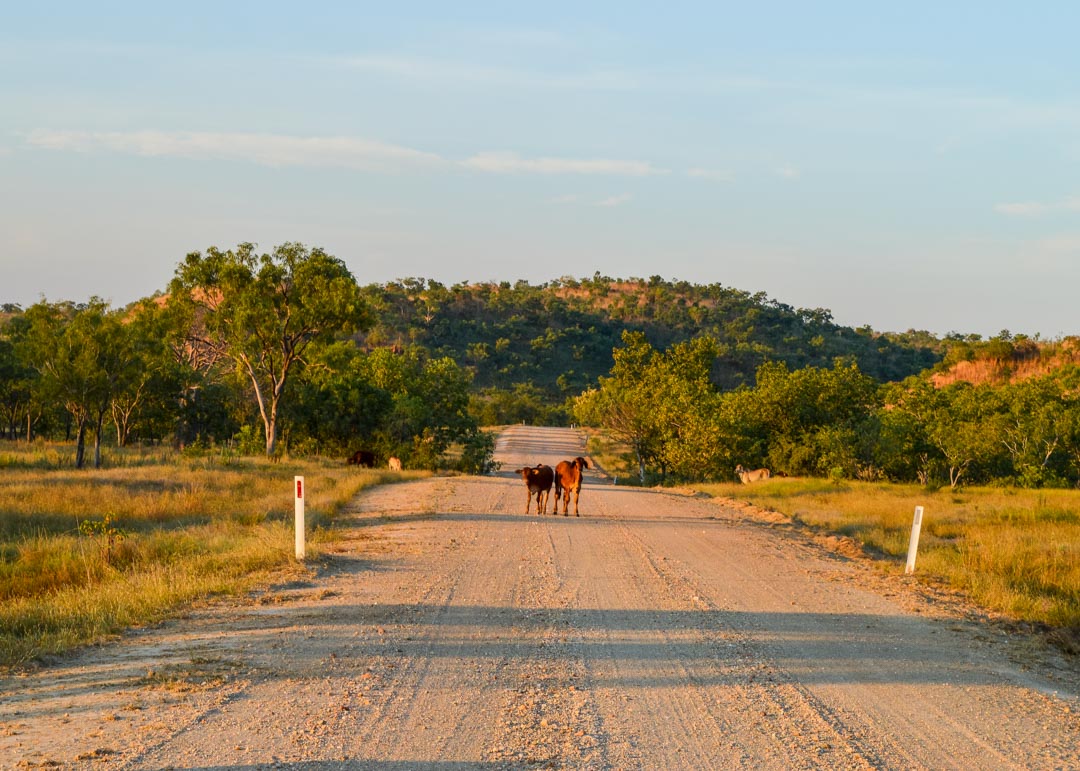 We were excited to get to Bell Gorge the next morning, check out our first waterfall of the trip and go for a swim, mainly because it really does heat up quickly in the morning. Although the rain in the Kimberley hadn’t been as spectacular this season as last, there was no shortage of water in the gorge. The rocky 2km return walk follows a dry creek bed down to the top of the waterfall where the water was as still as glass. It’s hard to even feel a current or pull in the water that leaps off the top of the waterfall but the Bell Gorge falls below were indeed thundering.
We were excited to get to Bell Gorge the next morning, check out our first waterfall of the trip and go for a swim, mainly because it really does heat up quickly in the morning. Although the rain in the Kimberley hadn’t been as spectacular this season as last, there was no shortage of water in the gorge. The rocky 2km return walk follows a dry creek bed down to the top of the waterfall where the water was as still as glass. It’s hard to even feel a current or pull in the water that leaps off the top of the waterfall but the Bell Gorge falls below were indeed thundering.
For the more adventurous, the walk continues over the upper river to scale down some rocks to the bottom of the waterfall. If you stay at the top it’s also safe to swim there in the shallow pools, but if you’re up for it don’t miss the more challenging walk to the bottom, where you can plunge into the most amazingly deep and clean freshwater pool.
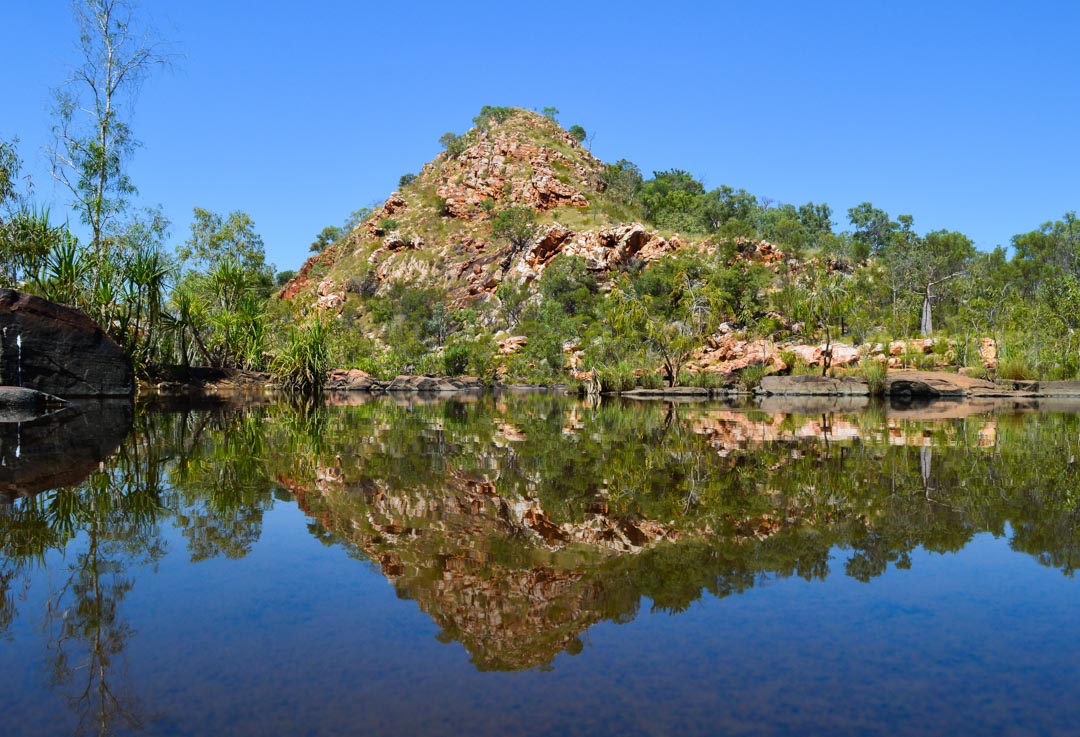
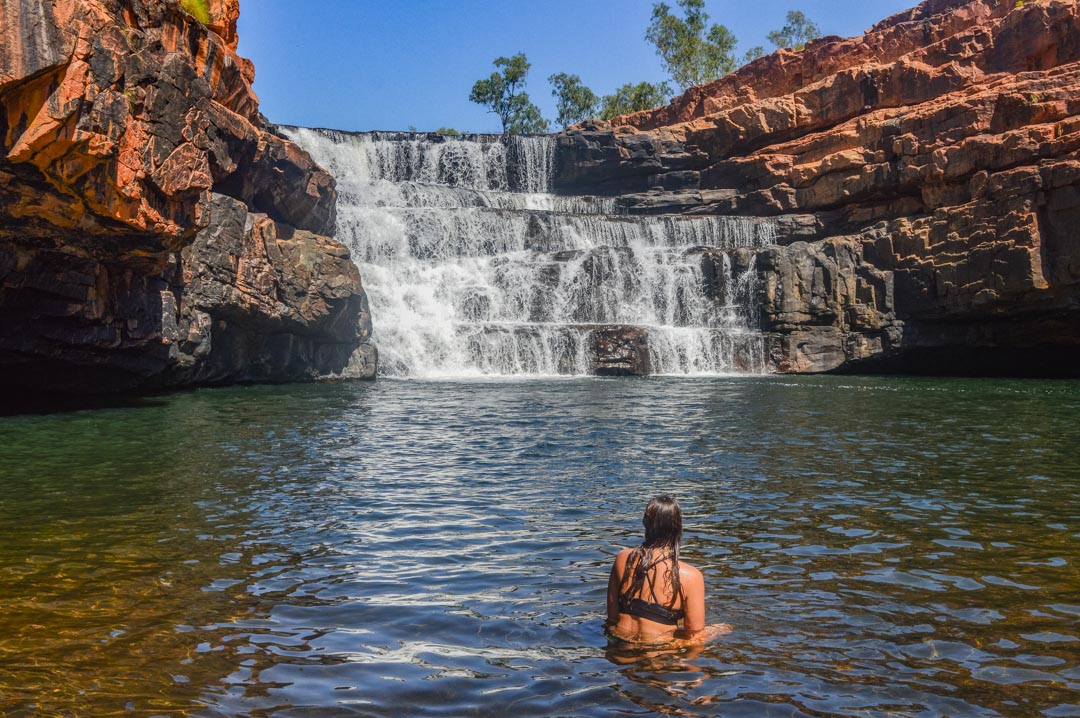 After spending a few hours at Bell Gorge - taking in the beauty of the tall red layered sandstone cliffs and jumping in and out of the cool water - we decided we’d probably had enough sun for the day and continued our journey up the Gibb. The next campsite wasn’t far up the road but we spent a good chunk of the afternoon dilly-dallying, stopping at lookouts, admiring the local wildlife and the cute calves that seem to be around every bend in the road.
After spending a few hours at Bell Gorge - taking in the beauty of the tall red layered sandstone cliffs and jumping in and out of the cool water - we decided we’d probably had enough sun for the day and continued our journey up the Gibb. The next campsite wasn’t far up the road but we spent a good chunk of the afternoon dilly-dallying, stopping at lookouts, admiring the local wildlife and the cute calves that seem to be around every bend in the road.
We didn’t end up getting into our campsite until after dark, which we’re normally not fond of, but in this case it ended up working in our favour. On the way, we were able to see a beautiful black-headed python just waiting to be someone’s speed bump! Luckily, we were only travelling about 50km/hour because it was dark and very hard to see, so we were stopping frequently for herds of cattle. I yelled “Stop, snake!” to my partner, who luckily missed this little guy in the centre of the road.
We jumped out and ran back while putting our head torches on to make sure he’d slithered off the road but there he was, still lying there, enjoying the warmth of the road now that the sun had gone. Leif and I absolutely love reptiles and we’ve both worked with them, handled them and owned them in the past, so don’t try this at home kids…
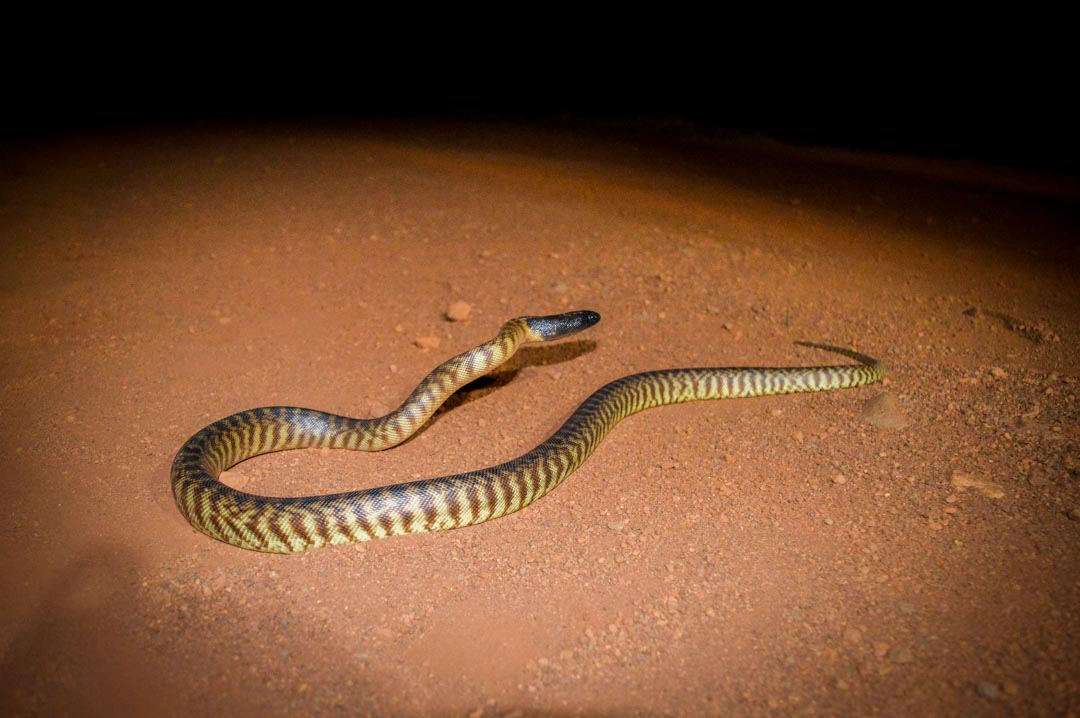
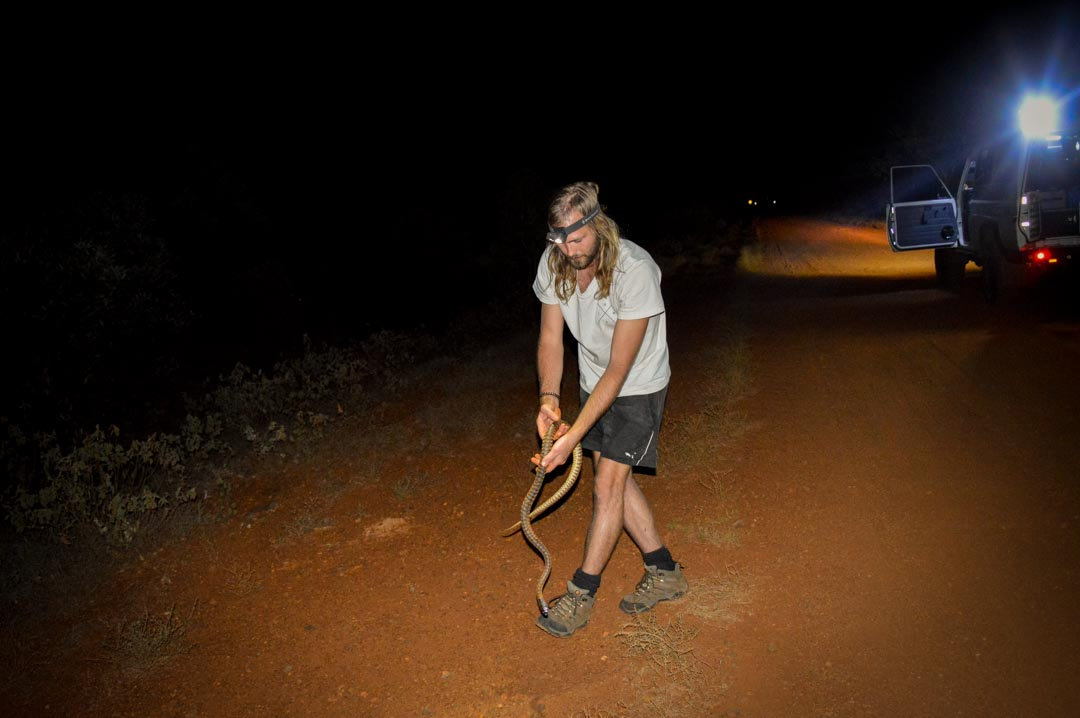
Being a python he was non-venomous, so we gently picked him up and moved him off the road in the direction he was heading so he didn't end up a very flat black-headed python. We were absolutely ecstatic as we’ve only ever seen one other black-headed python in the wild and it didn’t have as vivid markings. Sometimes it pays to take it slow!
After a good night’s sleep, we woke early and drove into Adcock Gorge to be the first ones there. The road leading in can be a bit confusing with next to no signage, but you are able to track it using your Hema App (basically take the left turn at the old fuel barrel). It requires a little bit of rock crawling and a very shallow water crossing near the end of the four-wheel-drive track, but the walk itself is short and took us about 10 minutes one way. Again, there are no signs so make sure you drive right to the end to find the track up the creek.
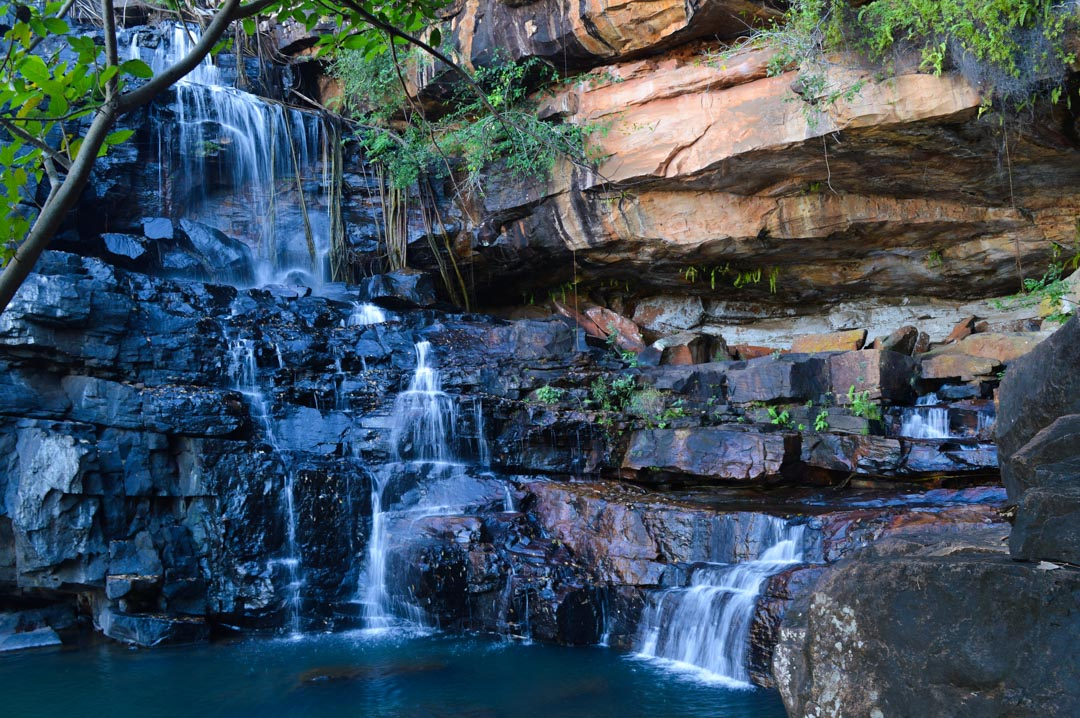
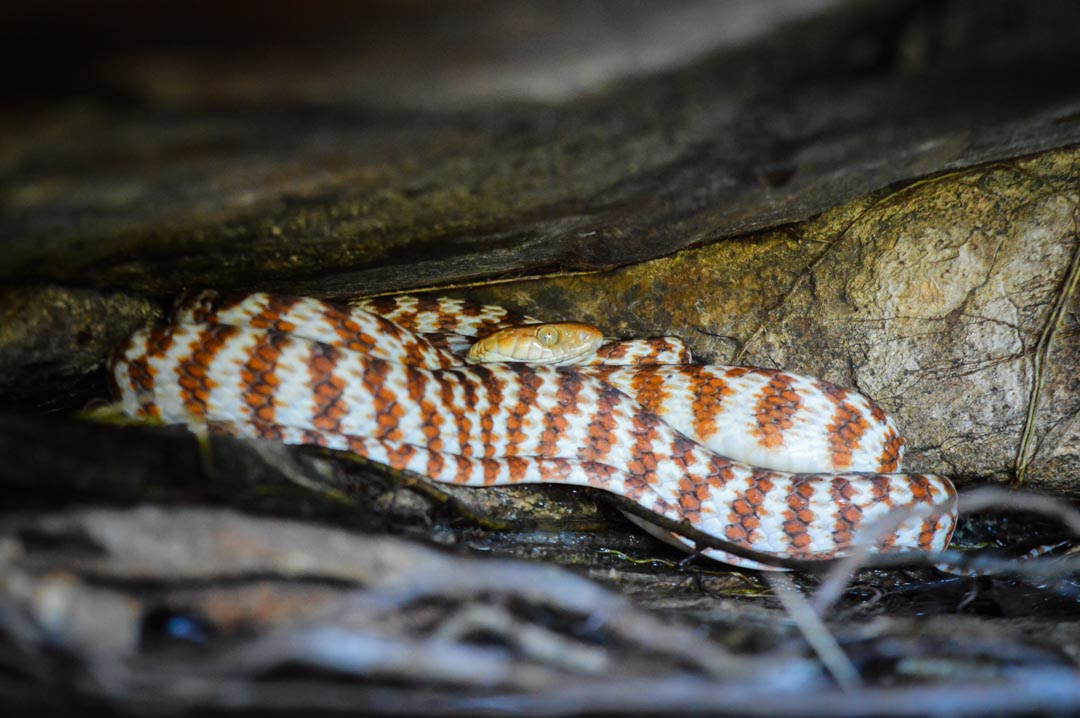
Having smashed out a short walk, shower and swim before breakfast we headed to our next stop at Galvan’s Gorge for some more exploring. The walk into Galvan’s isn’t extremely long but it requires some climbing over logs and rocks, plus there are no signs. Like many of these freshwater waterholes, the pool beneath the waterfall is endlessly deep. At Galvan’s someone has even tied a rope swing to one of the trees on the right of the waterfall. Try to walk this way to the waterfall so you can also see a distinct and easily accessible Wandjina (an important figure in Aboriginal rock art which represents ancestral beings that bring rain in the wet season) and a rock painting of two snakes, just a small taste of the Kimberley’s unique Aboriginal art.
After quickly ticking a lot of things off our list we decided to keep driving to get to the Mt Barnett Roadhouse and station, from which you access Manning Gorge. We planned to walk the gorge long into the afternoon, but the owners of the station (of which Manning Gorge is a part) have set opening times. They like visitors to have left the falls by 3pm to ensure everyone is safely home before dusk, so instead we decided to potter along the road and walk the gorge in the morning. Again, our timing seemed to work out perfectly, because on our way we found a uniquely patterned Kimberley Blue-tongue Lizard on the road.
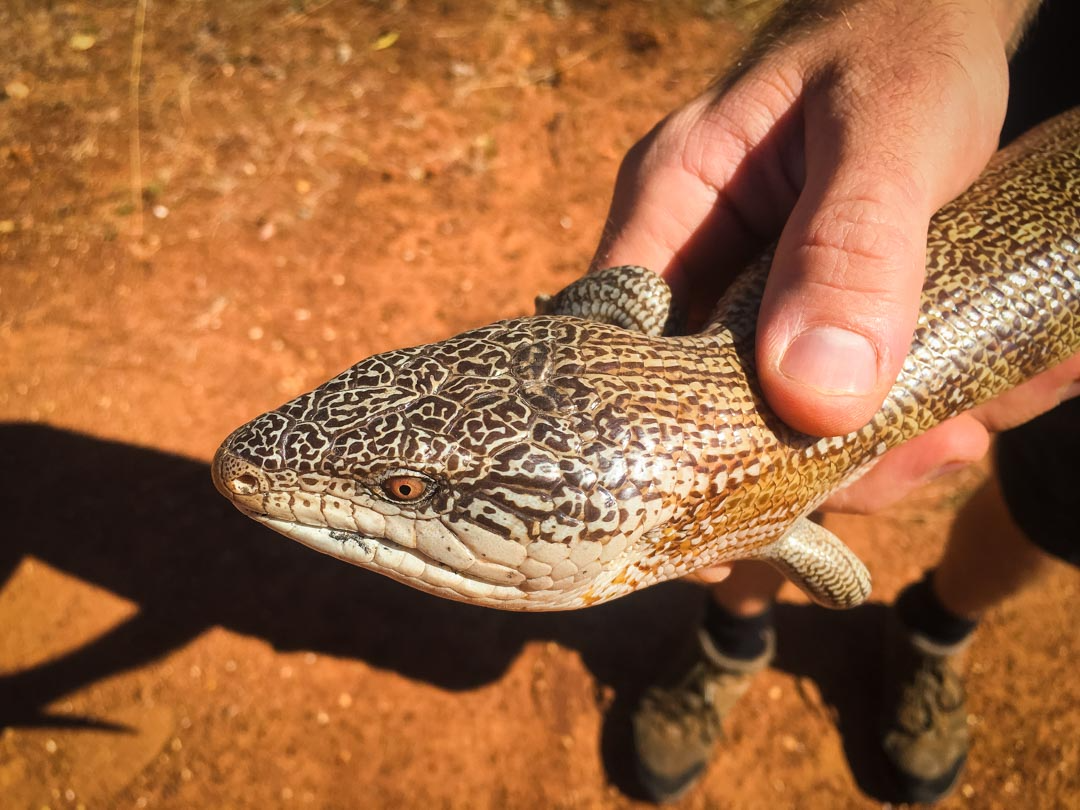
Mt Barnett Station charges $8 per person for a day pass entrance to the gorge but if you stay at the campgrounds overnight, gorge access is included for the day of and the day after your stay. The walk one way to the gorge is about 2.5km and isn’t the easiest. It begins with a lot of fun, loading into a tinny in a waterhole and using a rope pulley system to get from one side to the other. Try not to get your shoes wet though because this is only the first part!
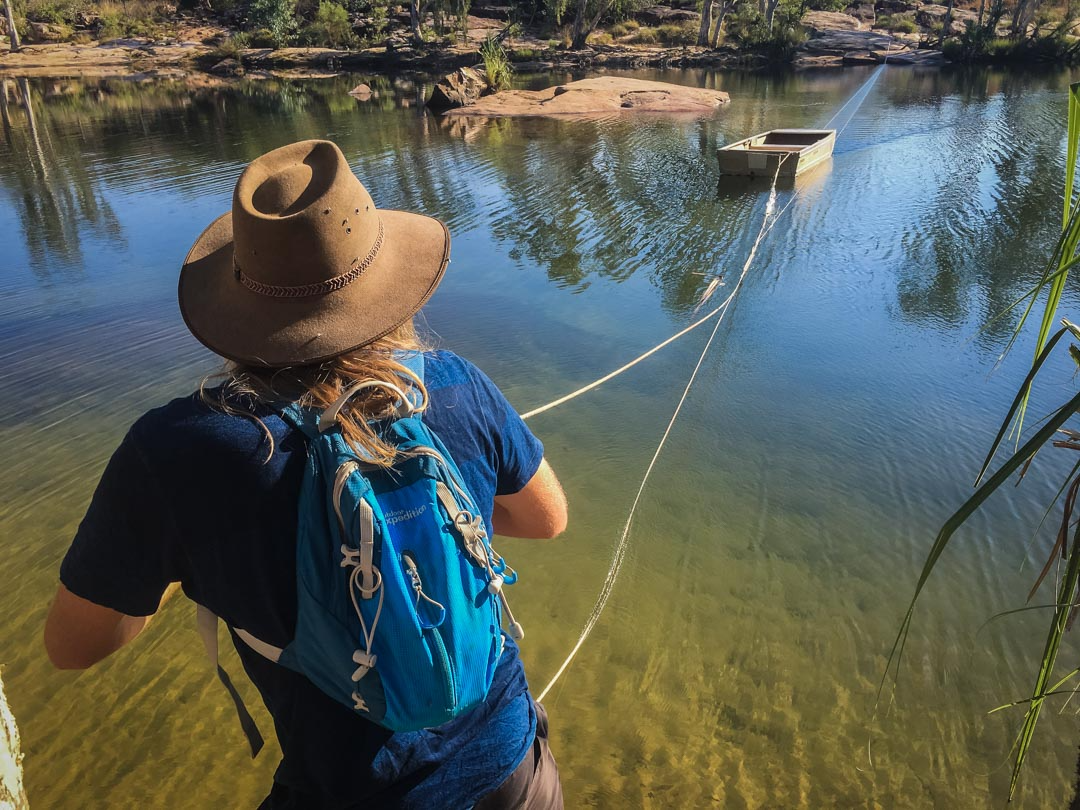
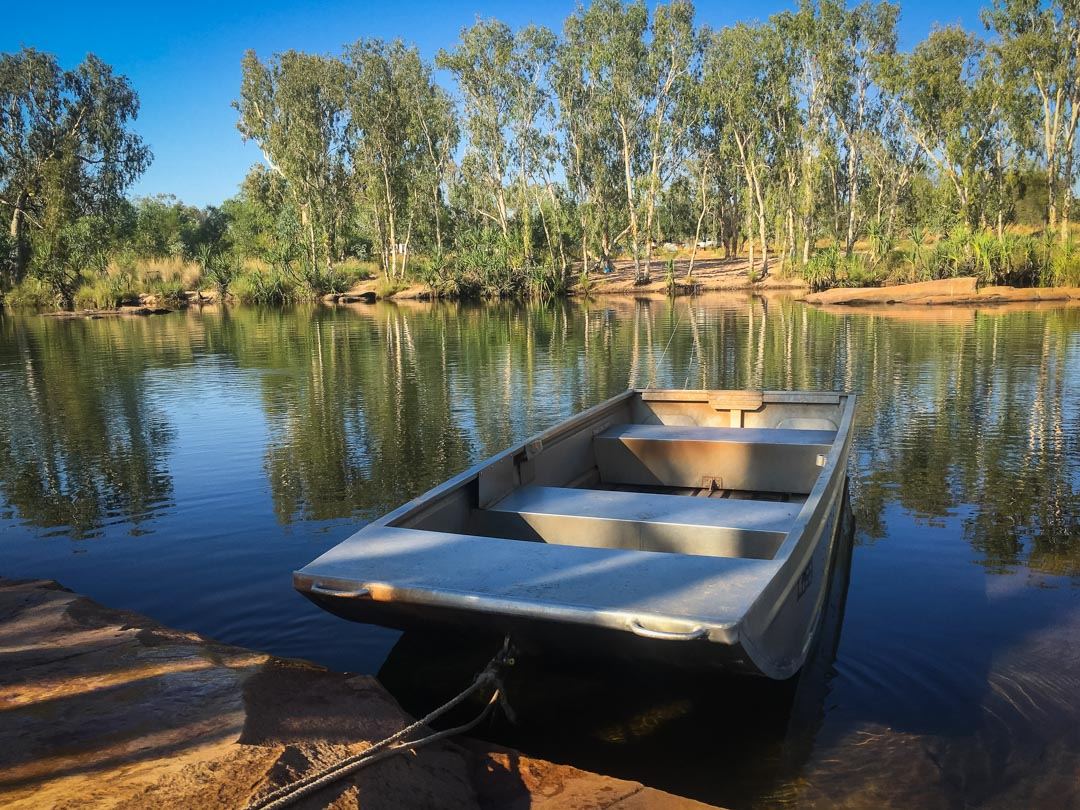
The rest of the walk involves some rock scrambling and a reasonable level of fitness since there are some hilly sections (not to mention the majority of the walk is in full sun). This early in the year, most of the surrounding vegetation has been burnt off ahead of the dry season, so there is limited shade. The end result is breathtaking and completely worthwhile, even though you sweat up a storm on the walk in.
The first glance you see of the waterfall is from a fair distance away but it gets bigger and more powerful the closer you get. Even in the dry season when the waterfall may have stopped flowing, the gorge itself will still contain a massive amount of water because of the depth of the waterholes. The thundering power and erosion caused by millions of years of flooding has eaten away at the rocks, hollowing out the deep swimming spots, perfect for bomb diving competitions.
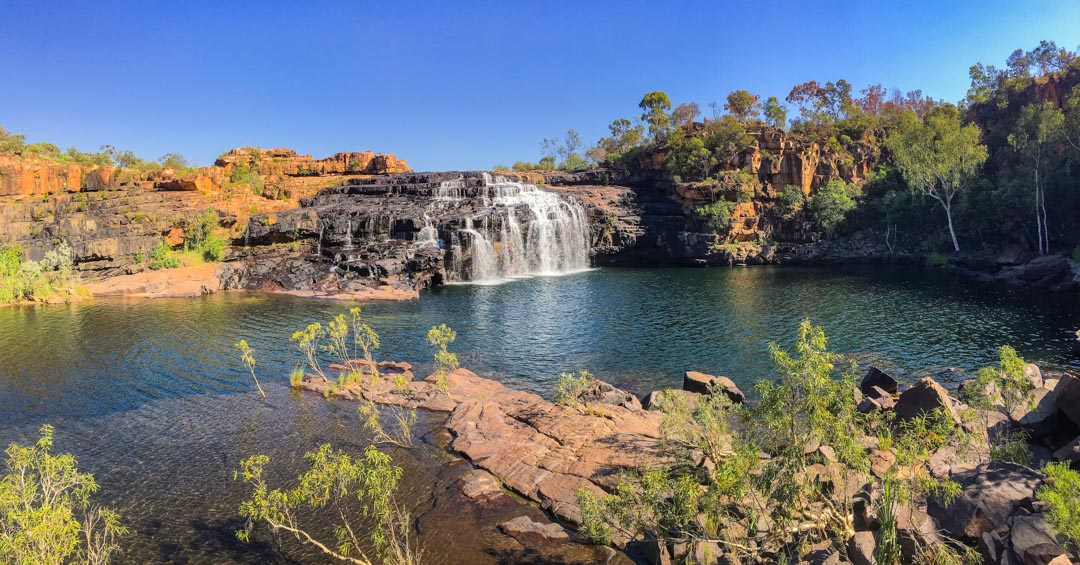
If you’re not too keen on swimming in the deep end, along the gorge there are plenty of sand banks that lead into other swimming holes which are shallow enough that you can see the bottom. It’s a wonderful place to take the whole family and a picnic and spend the entire day there.
On our final leg home towards Broome we detoured off the Gibb River Road onto Fairfield-Leopold Downs Road. Our first stop was at Windjana Gorge, where we spent a good hour sitting on the banks of the river, spotting freshwater crocodiles. Unfortunately, by this stage our camera had died - such bad timing as we spotted a nesting pair of Peregrine Falcons up in the gorge walls which would have added to our growing collection of wildlife photos. The limestone walls of Windjana Gorge are part of an ancient barrier reef system called the Devonian Reef which was once under water. It an amazing place to make a quick stop as it’s easy walk in to see the Devonian Reef and the crocodiles. It also puts things into perspective as to how small we are on this planet - see if you can spot Leif in the picture below!
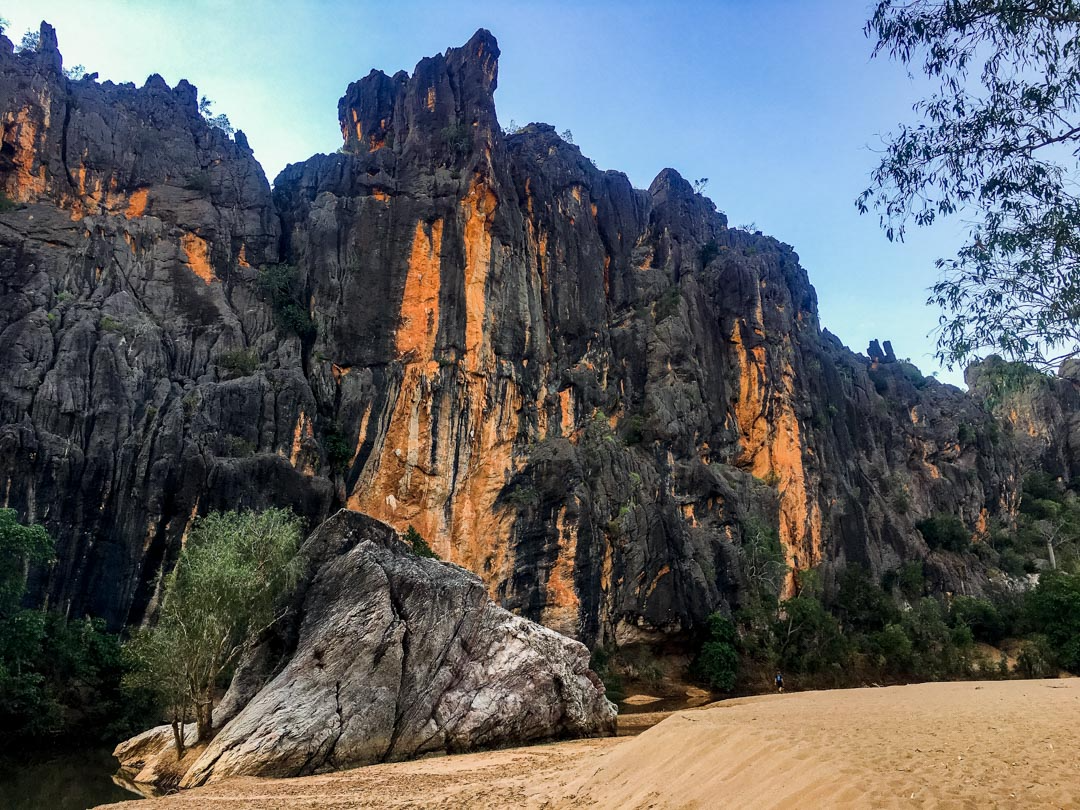
Following our stop at Windjana Gorge we continued to Tunnel Creek where we whipped out our head torches, threw on some old shoes and trekked all the way through the dark and eery tunnel. Tunnel Creek has a pretty incredible history, not only for its natural rock formation but because of its connection with a conflicted Aboriginal warrior Jandamarra, who died at Tunnel Creek defending his people in the 18th century. You can learn about him at the creek but it’s actually worth reading up on before you go. Walking the full 750m length of the tunnel, in and out of pitch blackness, crossing through thigh-deep water and hearing the squeaks of bats above is a strange experience. Out the other side we were graced with seeing four Merten’s Water Monitors lining the banks of the creek that continues to flow as normal.

Both of these stops were short and sweet but were actually a huge highlight of our trip! All in all, our trip took us about five days which included (in order of visit) Bell Gorge, Adcock Gorge, Galvan’s Gorge, Manning Gorge, Windjana Gorge and Tunnel Creek, however if you were pressed for time you could visit all of these places within four days or save the last two destinations for another date. The Kimberley is not a small place and there’s endless exploring to do down mysterious dirt roads, but even if you can only visit a few of these places, you’ll no doubt leave wanting more…


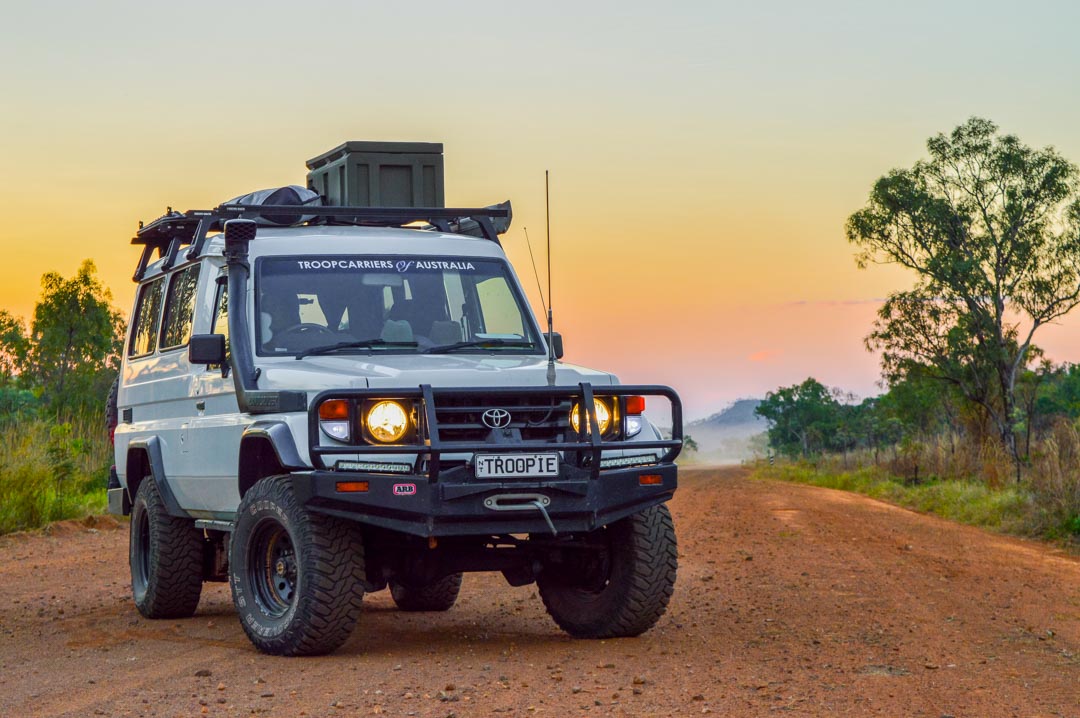



0 comments